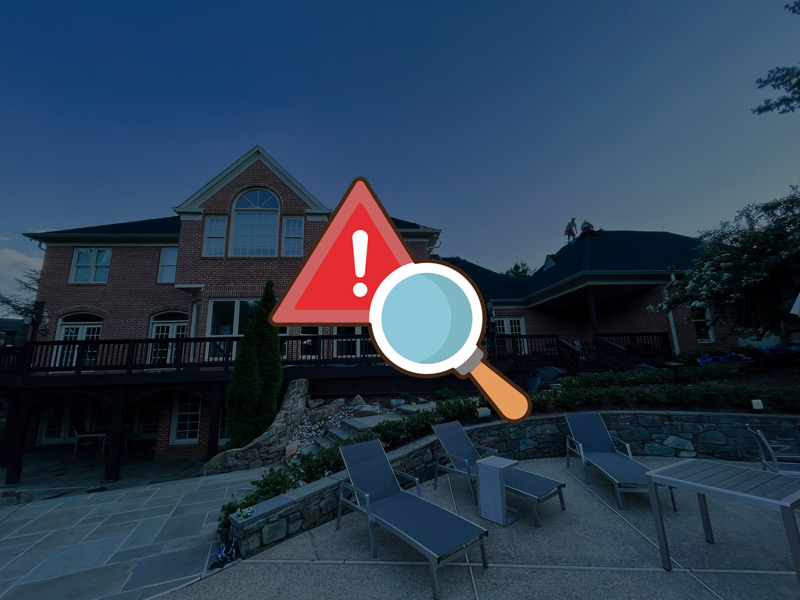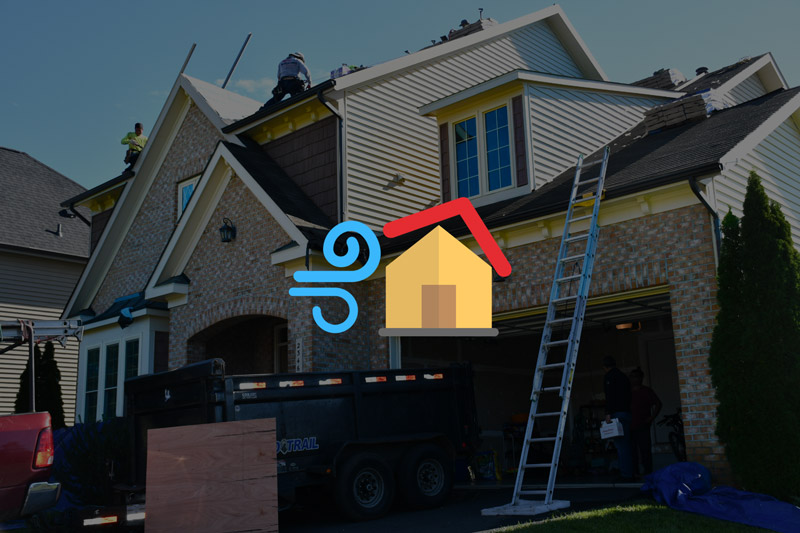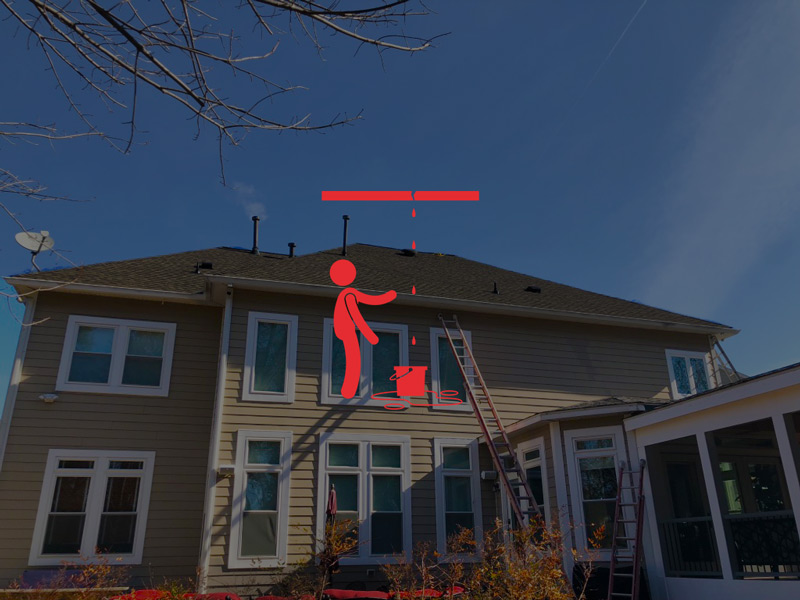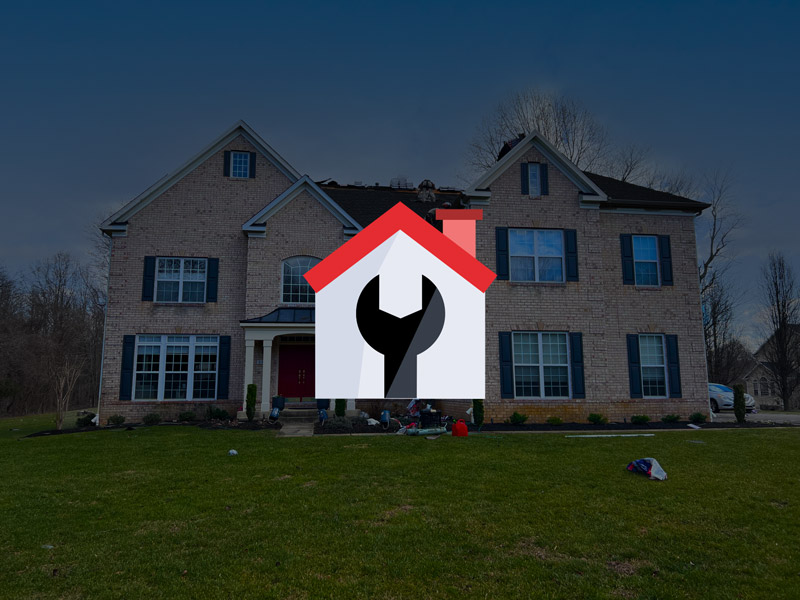Can a Roof be Replaced in the Rain? Risks and Recommendations
Now let’s address the question that homeowners often ponder: Can a roof be replaced in the rain? The short answer is that it is not advisable. Roof replacement is a complex process that requires careful planning, precise execution, and favorable weather conditions. While some minor repairs can be carried out in light rain, a full roof replacement is best done during dry weather to ensure optimal results.

Understanding the Roof Replacement Process
Explaining the Typical Steps Involved in Roof Replacement
When considering roof replacement, it’s important to understand the typical steps involved. The process generally begins with an assessment of the existing roof to determine the extent of the damage and whether replacement is necessary. This involves inspecting the shingles, underlying structure, and identifying any leaks or weak areas.
Next, the old roofing material is removed, ensuring a clean surface for the new installation. This step may involve removing the shingles, underlayment, and other components. Once the old roofing material is cleared, repairs or reinforcements to the underlying structure, such as the roof deck, may be carried out if required.
Following the preparation stage, the installation of new roofing materials commences. This includes laying down a suitable underlayment, applying shingles or other roofing materials, and securing them in place. Flashing, vents, and other roof accessories are also installed to ensure proper functionality and waterproofing.
Need for a Dry Working Environment during the Process
During the roof replacement process, it is crucial to have a dry working environment. Dry conditions provide a stable and safe foundation for the roofers to carry out their work effectively. Rainy conditions can pose numerous challenges, such as slippery surfaces, reduced visibility, and compromised safety for the workers.
Highlighting the Risks Associated with Performing Roof Replacement in Rainy Conditions
Performing roof replacement in rainy conditions introduces various risks and compromises the quality of the work. The presence of rainwater on the roof makes it challenging to ensure proper adhesion and sealing of the roofing materials. This can lead to leaks, inadequate waterproofing, and reduced longevity of the new roof.

Safety Concerns during Roof Replacement in the Rain
Increased Hazards for Workers on Slippery Surfaces
When it comes to roof replacement in the rain, safety becomes a significant concern. Rainwater creates slippery surfaces, making it difficult for workers to maintain balance and stability while carrying out their tasks. The risk of slipping, tripping, and falling increases substantially, posing a threat to their well-being.
Roofers need secure footing to navigate the roof and handle heavy materials. However, rain can create an unstable environment, jeopardizing their safety. Maneuvering on wet surfaces requires extra caution and reduces the efficiency and productivity of the roofing crew.
Potential Accidents and Injuries Caused by Wet Conditions
Performing roof replacement in the rain introduces a higher risk of accidents and injuries. Reduced visibility due to rain can impair workers’ ability to identify potential hazards, increasing the likelihood of accidents. Additionally, wet roofing materials and tools become harder to handle, potentially leading to mishaps and injuries.
Falling from heights is a serious concern during roof replacement, and the presence of rain exacerbates the risk. Slippery surfaces make it harder to maintain a secure footing, increasing the chances of accidents that may result in severe injuries or even fatalities. It is crucial to prioritize the safety of the workers and mitigate these risks by avoiding roof replacement in rainy conditions.
Negative Impact of Rainwater on the Structural Integrity of the Roof during Replacement
Rainwater can have a detrimental effect on the structural integrity of the roof during the replacement process. Excessive moisture can seep into the roof’s underlying components, compromising their strength and stability. This can lead to sagging, rot, or decay of the roof deck, trusses, or supporting beams.
Furthermore, rainwater that accumulates during the replacement process may not be adequately diverted, potentially causing pooling and subsequent water damage. Water infiltration can weaken the roof’s structure, lead to mold and mildew growth, and result in costly repairs down the line.

Quality and Durability Considerations
Importance of Proper Installation Techniques
Proper installation techniques are crucial for ensuring the quality and durability of a roof. During roof replacement, specific procedures must be followed to guarantee a long-lasting and reliable result. These techniques include precise measurements, correct alignment, and appropriate fastening of roofing materials.
When replacing a roof, it is essential to adhere to manufacturer guidelines and industry best practices. These guidelines provide instructions on material compatibility, proper ventilation, and sealing techniques. Following them diligently helps to maintain the integrity of the roof and maximize its lifespan.
Potential Compromises to Quality during Roof Replacement in the Rain
Roof replacement in the rain can compromise the quality of the installation. Rainwater can interfere with the proper adhesion and sealing of roofing materials, such as shingles or membranes. This can lead to suboptimal performance and an increased risk of leaks and water damage in the future.
Moreover, wet conditions make it challenging to ensure precise alignment and accurate fastening of roofing components. The moisture can affect the stability and integrity of the installation, potentially resulting in loose or misaligned materials. These compromises may affect the overall quality and aesthetics of the roof.
Long-Term Impact on the Roof’s Durability and Performance
The decision to replace a roof in the rain can have long-term consequences for its durability and performance. The compromised installation due to wet conditions may lead to premature deterioration of the roofing materials. Inadequate adhesion and sealing can result in water infiltration, which can cause rot, mold, and structural damage over time.
Additionally, a roof that has been replaced in the rain may be more susceptible to future issues. Poorly aligned or loosely fastened materials are more likely to be affected by strong winds, potentially leading to shingle blow-offs or other damage during storms.

Moisture Management Challenges
Difficulties of Managing Moisture during Roof Replacement in the Rain
Roof replacement in the rain presents significant challenges in managing moisture effectively. Rainwater can impede the ability to maintain a dry working environment, making it harder to ensure proper moisture control during the installation process. Managing and diverting water becomes more complex, increasing the risk of moisture-related issues.
Potential for Water Infiltration during the Process
During roof replacement in the rain, the potential for water infiltration becomes a real concern. Even with temporary coverings or tarps, water can find its way through vulnerable areas, such as exposed sections or areas that have not yet been fully sealed. This infiltration can compromise the structural integrity of the roof and lead to damage inside the home. Roofing materials, such as shingles or membranes, need to be installed on a dry surface to create a secure barrier against water intrusion. Installing them during rainy conditions increases the likelihood of gaps or insufficient adhesion, increasing the risk of leaks and water damage.
Risks of Mold and Mildew Growth due to Trapped Moisture
One of the significant risks associated with roof replacement in the rain is the potential for mold and mildew growth. Moisture can become trapped within the roof layers or in the underlying structures due to inadequate drying time during installation. This trapped moisture creates a favorable environment for mold and mildew to thrive, posing health risks and further damaging the roof’s integrity. Mold and mildew can deteriorate the materials, compromise indoor air quality, and cause respiratory issues for occupants. Additionally, the presence of mold or mildew can lead to costly remediation efforts and potentially affect the property value.

Best Practices and Recommendations
Ideal Weather Conditions for Roof Replacement
To ensure a successful and long-lasting roof replacement, it is crucial to consider the ideal weather conditions. While it may be tempting to proceed with the project regardless of the weather, it is best to wait for dry conditions. By avoiding rain during the roof replacement process, you minimize the risks associated with moisture, water infiltration, and compromised installation.
Optimal Seasons for Roof Replacement
Timing your roof replacement is equally important. While roofs can be replaced throughout the year, certain seasons offer more favorable conditions. Spring and summer tend to provide extended periods of dry weather, making them ideal for roof replacement projects. However, local climate and weather patterns should also be taken into account.
During the planning phase, consult with professional roofers who have extensive experience in your area. They can provide valuable insights into the best time to schedule your roof replacement based on local weather patterns, ensuring optimal conditions for a successful installation.
Consulting with Professional Roofers for Expert Advice
When contemplating a roof replacement, it is essential to consult with professional roofers who possess the expertise and experience in handling such projects. They can assess the current condition of your roof, evaluate the feasibility of replacement, and provide expert advice on scheduling considerations.
Professional roofers understand the intricacies of weather conditions and their impact on roof replacements. They can guide homeowners in making informed decisions about the ideal time to proceed with the project. By working with professionals, homeowners can ensure the highest quality of workmanship, minimize risks, and receive valuable recommendations tailored to their specific circumstances.
View More Articles
Please Share!










